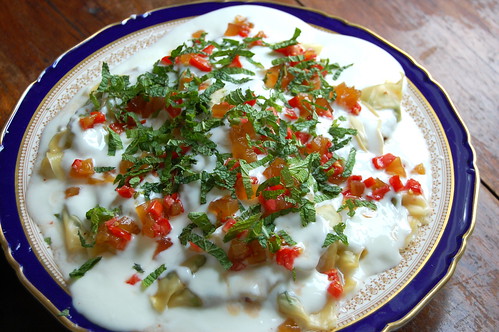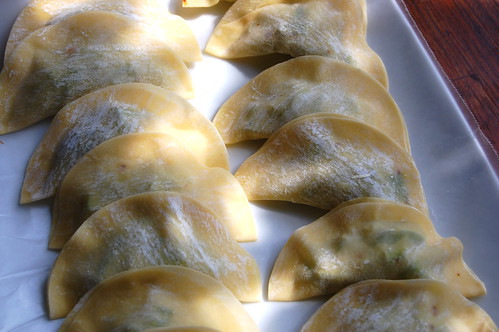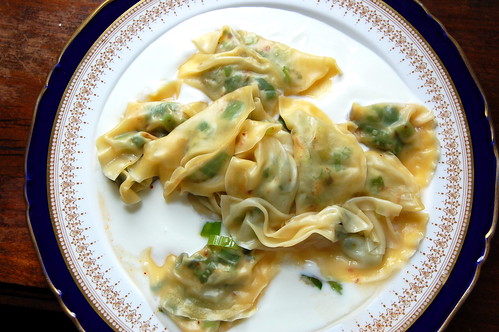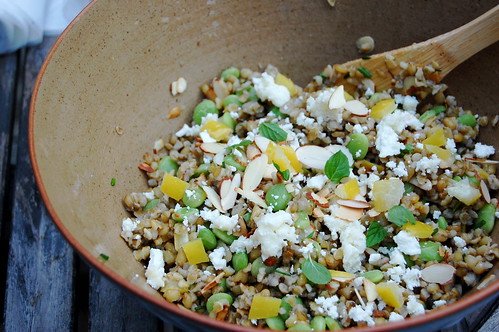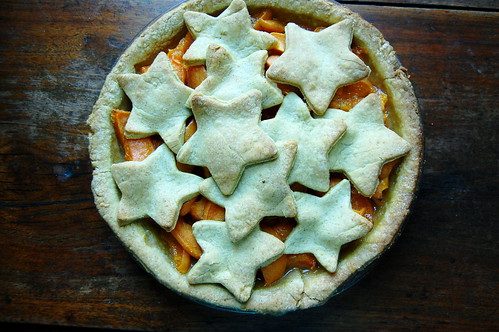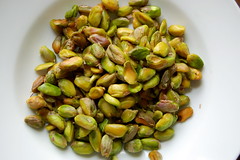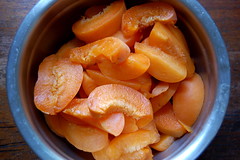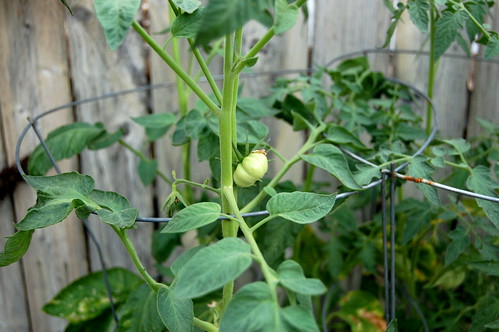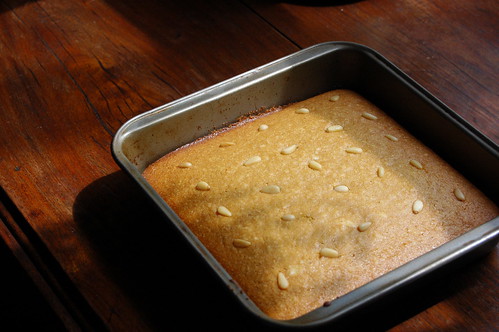
There are several semolina-based cakes in Middle Eastern cuisine that go by a variety of names. Basbousa, also known as namoura, is a dense semolina and yogurt cake which is soaked in syrup. Sometimes it has coconut added as a variation. On the lighter end of the spectrum is the Lebanese cake sfouf, which is a fluffier semolina cake that's barely sweet. It's mildly reminsicent of a slightly sweet Southern-style cornbread.
I was reading recently about how sfouf was originally made with carob molasses, one of the original natural sweeteners in the region. It is a molasses made from the pods of the carob tree, carob may also be familiar to you as a chocolate substitute. So, I thought I'd give the recipe a try with a jar of carob molasses we picked up on the Mediterranean island of Gozo.
 As, I mixed the cake, I realized something was terribly wrong. Carob molasses is horribly bitter, and with that as the only sweetener, the cake batter actually tasted bad. Worse, the batter looked curdled. I started over, this time with half the amount of carob and good splash of honey and brown sugar.
As, I mixed the cake, I realized something was terribly wrong. Carob molasses is horribly bitter, and with that as the only sweetener, the cake batter actually tasted bad. Worse, the batter looked curdled. I started over, this time with half the amount of carob and good splash of honey and brown sugar. I was still skeptical about the whole endeavor, but went ahead trepidatiously with the baking. Paul was the first to taste it, and without knowing the history, pronounced it to be quite good. And indeed, it's caramelly and not too sweet, crumbly and simple. It's not as fluffy as modern versions of sfouf, but its denseness lends itself nicely to a scoop of ice cream or some cooked fruit. I'm all for authenticity and old traditions, as long as it tastes good first.
Semolina Cake (Sfouf)
1 1/2 cups semolina
3/4 cup flour
1 teaspoon baking powder
1/8 teaspoon ground anise, optional
1/2 cup butter, softened
3/4 cup milk
1/3 cup carob molasses
1/3 cup honey
2 tablespoons brown sugar
pine nuts for decoration
1. Preheat oven to 350 F. Grease an 8x8 inch baking pan with butter or tahini.
2. Mix semolina, baking powder, anise, and flour in a large bowl. Add the butter and using a pastry blender or two forks, mix until crumbly. Stir in the milk, carob molasses, honey, and brown sugar to make a smooth batter. Pour into the prepared pan, dot the top with pine nuts if desired. Bake for 30-40 minutes, until firm and golden.

